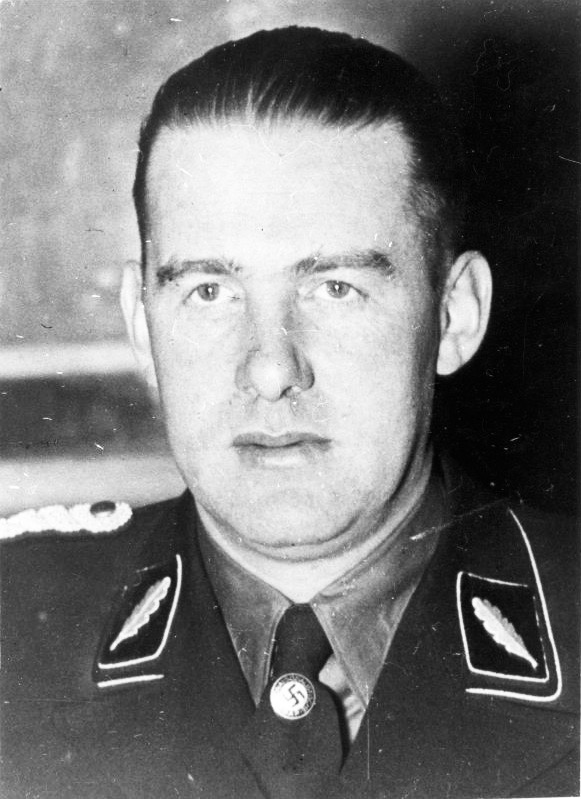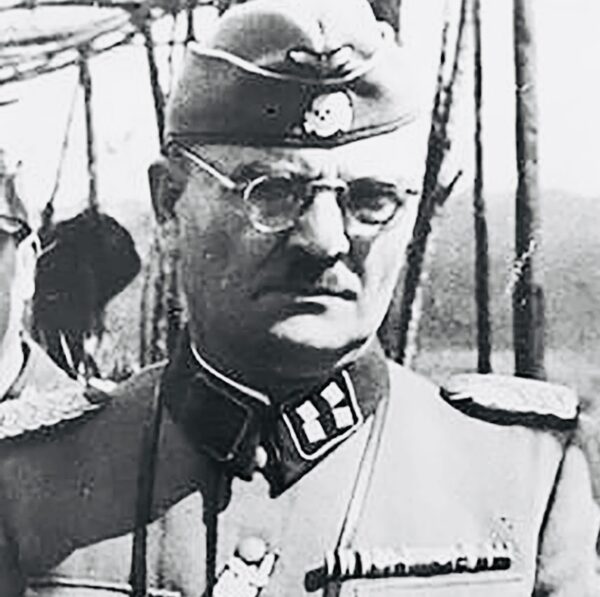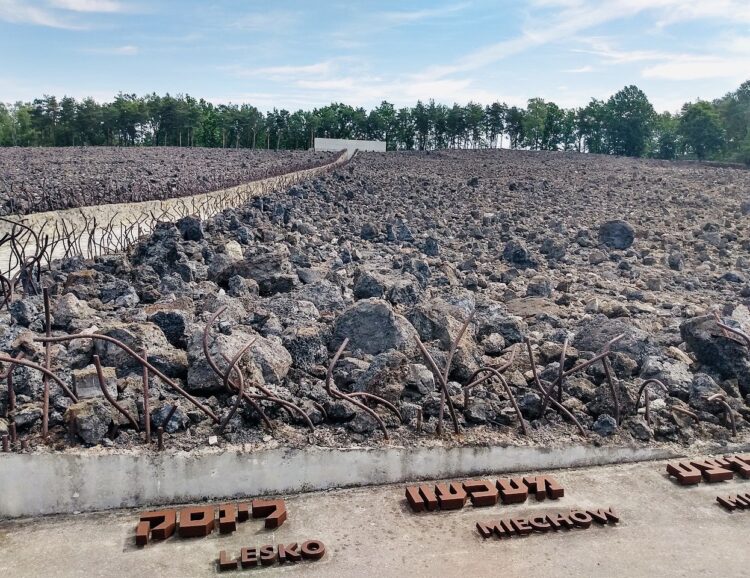Three Nazi extermination camps were built in German-occupied Poland to murder Polish Jews on a systematic basis. The first one, Belzec, was 125 kilometres southeast of Lublin. The second one, Sobibor, was near Chelm and northeast of Lublin. The third one, Treblinka, was about 100 kilometres northeast of Warsaw.
Situated on or close to major railway lines to assure the speedy delivery of the victims to their deaths, and located in sparsely-populated areas, they consumed the lives of approximately 1.6 million Jewish men, women and children.
All three killing centers were up and running by the time Reinhard Heydrich — the deputy commander of the SS security service and the coordinator of the genocidal campaign to exterminate European Jews — was assassinated by Czech partisans in a suburb of Prague in the spring of 1942.
In the wake of his assassination, the Nazi group charged with the task of wiping out the Jews of Poland dedicated their diabolical mission in honor of Heydrich’s memory. Henceforth known in German as Aktion Reinhard, it was directed by Odilo Globocnik, the SS leader in the Lublin district.

On October 13, 1941, Globocnik was authorized to build Belzec, the first death camp equipped with static gas chambers. Construction began about three weeks later, and the camp was ready for use by the end of February 1942. The first Jewish deportees arrived in Belzec on March 16, 1942.
The story of its development unfolds clinically in Chris Webb’s The Belzec Death Camp: History, Biographies, Remembrance (Ibidem Verlag), which is distributed in North America by Columbia University Press.
Tiny compared to Auschwitz-Birkenau, Belzec was constructed near the village of the same name. During the late 1930s, eight percent of its population was Jewish, with the rest of its residents being Polish and Ukrainian Christians.
From May 1940 onward, the Germans established several labor camps in and around the village to house forced laborers, mainly Jews from Lublin, Radom and Warsaw. Their task was to build fortifications along the border with the Soviet Union.
Globocnik chose Josef Oberhauser, a colleague, to supervise the construction of Belzec. Twenty skilled Polish manual workers from Belzec and environs built the first gas chambers and barracks under the direction of Edward Luczynski, a Pole of German extraction.
Adolf Eichmann, a key figure in the implementation of the Holocaust, visited the site in the winter of 1942.
Stanisław Kozak, a local Pole who worked on the project, provided a first-hand account of Belzec several months after World War II.
“The western, northern and eastern borders of the camp were planted with big fir trees to hide (its) interior,” he said. “The camp was divided (into) three parts. In the first part were the Jews employed in burying the corpses of the murdered Jews. In the second part, the sorting of the clothing and other belongings of the Jews. And in the third part, those employed in working in the camp.”
The three gas chambers were located outside these areas and were surrounded by trees. A camouflage net was placed over the roofs to prevent observation by low-flying airplanes.

Christian Wirth, Belzec’s inaugural commandant, witnessed the arrival of the first victims, Jews from the Lublin ghetto. A member of the camp’s SS detachment, Kurt Franz, described that day: “I heard with my own ears how Wirth, in a quite convincing voice, explained to the Jews that they would have to be deported further and before that, for hygienic reasons, they must bathe themselves and their clothes would have to be disinfected … It was made clear to the Jews that after the bath their valuables would be returned to them. I can still hear today how the Jews applauded Wirth after his speech. The behavior of the Jews convinces me that the Jews believed Wirth.”
Aleksander Zsmigdow, a guard, testified years later that the victims entered the corridor of the gas chamber very calmly. “When they realized they were going to be killed, they began screaming … From that moment what could be heard in the gas chamber was mostly shouts, the crying of children, and other horrid outcries … The people who were still standing outside the entrance to the chamber … also began screaming and did not want to go any farther.”
On March 27 of 1942, German Propaganda Minister Josef Goebbels wrote an entry in his diary about the day’s events: “The procedure is pretty barbaric and is not to be described here … Not much will remain of the Jews, About sixty percent will have to be liquidated. Only about forty percent can be used for forced labor.”
From mid-March to mid-April of that year, upwards of 30,000 Jews from the Lublin district, Zamosc, Izbica and Piaski were gassed in Belzec. By June, 93,000 Jews had perished there. Killings reached a peak in August 1942.

In that month, the wooden gas chambers were dismantled and replaced with a new gassing facility, fabricated of bricks and concrete, in the central part of the camp.
Kurt Gerstein, a senior SS officer, wrote a detailed report of his visit to Belzec. It is chilling: “The corpses were thrown out (from the gas chamber) — wet with sweat and urine, soiled with excrement, menstrual blood on their legs … Two dozen dentists opened (their) mouths with hooks and looked for gold. Other dentists used pliers and hammers to break gold teeth and crowns out of the Jews.”
The last batch of Jews sent to Belzec arrived in December 1942. A few months earlier, shortly after SS chieftain Heinrich Himmler visited Belzec, Globocnik ordered Jewish forced laborers to exhume bodies in mass graves and burn them. Webb believes that 540,000 corpses were cremated.

Clearly, the Nazis wanted to destroy evidence of mass murder, a job completed by the spring of 1943. By June, the camp itself had been dismantled, and Jewish laborers were shot in Belzec or deported to Sobibor to be gassed. The SS left Belzec on May 18, 1943.
The site itself was ploughed over. A manor house, planted with trees and crops to disguise it as a farm, was built. In July 1944, the area was taken over by the advancing Soviet Army.

The first monument dedicated to the victims was erected in 1963, but the Belzec memorial was neglected and rarely visited.
Webb devotes two separate chapters to eyewitness accounts and perpetrators. They are vivid and chilling and attest to the depths of depravity to which human beings are capable.
